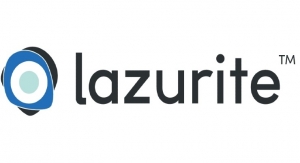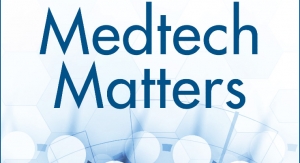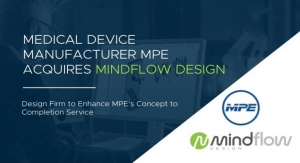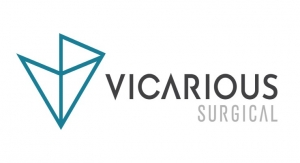Kelly Lucenti09.08.11
In Europe, the statistics related to hospital-acquired infections (HAIs) are startling. One out of 10 patients is affected by healthcare-related infections. There are an estimated 3 million cases of HAIs that occur annually. And, as many as 50,000 people die each year from these infections.1 HAIs are a public health threat, especially with the rising number of immune-compromised patients, such as transplant recipients, those who are HIV positive, and the elderly, to name a few. Moreover, infections increasingly are becoming difficult to manage as bacteria become resistant to common antibiotic treatment regimens.2
The result? Europe is sounding the call for sterile medical device products, from implants to surgical instruments. The increasing prevalence of illnesses contracted in hospitals is making patients, doctors, and hospital administrators nervous here and across the pond. Hospital-borne illnesses, otherwise known as nosocomial infections, those resistant to antibiotics—such as mad cow disease, staph infections, and super bugs—make headlines and, although not always actually connected to medical device related issues, their prevalence has ripple effects for the medical device industry.
“Right now there is a lot of focus on infection rates. The actual rate of infection may be lower than is thought, but even a small number of infections can be extremely expensive. So while the number of infections may be small, the costs are very high,” said Troy D. Drewry, vice president of U.S. operations for New York, N.Y.-based Paradigm Spine LLC.
The current sterilization process in European hospitals is to autoclave medical device products used in surgical procedures at the hospital or sometimes at regional processing centers. While autoclave can be an effective method of sterilization, autoclaving of implants and surgical instruments at hospitals is problematic and is likely to be abandoned altogether in the future. The first issue inherent in autoclaving of medical device products at hospitals is the lack of expertise; sterilization is not a core competency of hospitals and their staffs. Second, autoclaving at hospitals is a decentralized effort that prohibits the tight controls needed with regard to process and validations that can prevent mistakes leading to cross contamination and possible infection of patients.
Regulatory requirements coming as a consequence of infections related to antibiotic-resistant bacteria are creating more of a need for products to arrive at hospitals already sterilized. European governments increasingly are becoming concerned with the potential for infection of individuals or groups of patients. These governments are looking to shift the onus of the sterilization of medical device products from the hospitals to OEMs. OEMs are looking for cost-effective means of answering the requirements demanded by governments and the associated need coming from hospitals and customers. They also are looking ahead to a time when other countries, including the United States, may institute more stringent protocols and/or regulations regarding sterilization.
“Mostly, from what we see, this trend is developing in Northern European countries, including: Scotland, Great Britain, France, Germany and Scandinavian countries. Scotland does seem to be ahead, and several managers of OEMs have noted that the Scottish government is working on a law that will make it mandatory to have all implants sterile packed. But, mostly OEMs are making the change themselves without waiting for any law,” said Christophe Geisert, CEO of Geisert-Square GmbH, a company based in Donaueschingen, Germany, that provides development and manufacturing engineering of implants and instruments.
The Trend Toward Sterile
The pressure mounting for medical device products to arrive at hospitals already sterilized is beginning to affect customer needs and expectations. The medical device industry, with estimates for the United States medical device industry to grow at a compound annual growth rate of 9 percent for the period 2006-2013, is a burgeoning industry largely because it anticipates change.3 The most successful medical device manufacturers are those that understand the value of being flexible, either internally or by partnering with excellent outsourcing service providers, in order to respond to new governmental and customer demands.
While surgical implants, such as those used in knee, hip and shoulder surgeries, for years have been sterilized by the OEMs and sent to the hospitals already sterilized, spine and trauma implants have not. Surgical instruments as well have been sent non-sterile to hospitals. The practice has been to autoclave instruments and spine and trauma implants prior to surgery.
“Lots of implants are already sterilized because of packaging and handling requirements. Many that are not sterile packed are spine and trauma products. Sometimes bio films remain on the surface of products that autoclaving doesn’t always remove. That’s a concern,” said Drewry.
Taking a closer look at surgical instruments, after a surgery is complete, the instrument is sprayed with a wetting agent to prevent debris from adhering, sent to inspection and for additional cleaning through a washer/disinfector, rinsed, and then it is ready for autoclaving. New, much more stringent guidelines, developed in reaction to concerns about nosocomial infections—particularly mad cow—include, for example, a requirement for a higher pH level, or greater acidity, of the disinfectant used in cleaning individual surgical instruments and surgical instrument kits. These additional requirements are causing challenges for medical device manufacturers.
“The regulations in Europe are creating challenges for any medical device company trying to meet the demands of customers in both Europe and in the U.S.,” said a microbiologist and sterilization expert at a major OEM. “The example of the pH level is useful. The higher the pH level used in disinfecting instruments, the more likely we are to encounter problems with moving parts freezing up and with pitting of the metal used in manufacturing the instruments. The bigger issue, though, comes from the fact that the European guidelines and the FDA [U.S. Food and Drug Administration] regulations don’t always agree; they’re similar but different. In order to meet customer needs, we have to follow both.”
Many medical device manufacturers currently find themselves at an important point of decision. For spine and trauma implant manufacturers, does it make sense to create a combined sterile/non-sterile product line to answer the European concerns while also servicing customers who do not stipulate sterile product, or recognize the growing trend that is beginning to seem inevitable: produce fully sterile product lines. For instruments, there essentially are three options: create a fully sterile product line; develop disposable instrument sets; or establish more in-depth and comprehensive cleaning processes. As with all business decisions made in the medical device world, benefits typically are related to efficiency and disadvantages are predominately associated with cost and risk.
With regard to instruments, the microbiologist and sterilization expert said, “In the U.S., it is up to the OEM to ensure sterilization and validations. Right now, in Europe, it is up to the hospital. The issue comes when hospitals, which are under increasing pressure to complete more surgeries, try to make changes to processes without new validations and without talking to the OEMs. For example, they might not take into account the positioning of an instrument, the weight of a kit, or the drying time required before packaging. Our concern is that we might still be held liable so we try to stay on top of what is taking place at the hospitals and push them to conduct new validations if they change procedures.”
Spine and trauma implant manufacturers are experiencing a similar pressure, but one that comes with different issues to consider.
“There is a push from governmental agencies for going sterile because sterile packaging allows us to provide a unique product number for each implant. This enables us to track the actual implant down to the patient level and get to a unique identification number. The change to sterile packaged products has happened with other medical devices, and it’s coming for spine and trauma implants,” said Drewry.
European medical device companies also are affected by the trend towards sterilization.
“The time to market for sterile product is longer and more expensive since all the validation processes have to be conducted. This influences tremendously the time for CE Mark approval—sometimes a delay of six months is ‘normal.’ Also, production is probably more expensive since sterile packaging has to be added to the price,” said Geisert.
Producing a completely sterile product line understandably increases costs. In addition to the cost of sterilization and the necessary validations, more packaging is required, which increases costs in terms of packaging design, materials, and service. Storage and shipping also are cost considerations. Producing sterilized product also can take more time and slow speed to market. The benefits of going with a fully sterilized line include the obvious one, which is less risk of infection, which positively impacts the customer and the manufacturer. In addition, some efficiencies are picked up by having one packaging and labeling standard.
The advantages of splitting product lines into sterile and non-sterile include less cost for the non-sterile product because it does not go through the sterilization process and there is less need for packaging and related services. Non-sterile product also may already be available and ready to ship to customers. Drawbacks are the time, effort, and cost related to the need for different labeling and tracking mechanisms to distinguish between the sterile and non-sterile versions of the same product.
“All products at Paradigm Spine are sterile. I think it comes down to a question of benefit for the company and a question of benefit for the patient. Our company started in Germany where the requirements are more stringent so we inherited a sterile process. It’s a good place to be, because it’s very expensive for companies that are not already there to make the switch,” Drewry said.
The choice of which path to take that medical device manufacturers are now forced to make might seem like an overall disadvantage, but maybe there is an upside after all. The positive effects of providing sterilized medical device products to hospitals begin with the limiting of the opportunity for infections. Yes, the liability for sterilization does transfer to the manufacturer, but hospitals are no longer engaged in work that is beyond their core competencies and everyone—from customers to manufacturers to governments and the public at large—will benefit from a decrease in the potential for disease to spread. Finally, sterilization before delivery also benefits the manufacturer because it leads to enhanced traceability for more sophisticated product records and tighter inventory controls that can help trim costs.
“To understand why there is a push for sterile packaging, you have to step back and look at why. It really goes to the patient level. Requiring sterile packaged product is a way to assure that the patient is getting clean, sterile implants and instruments in surgery. Unless the product is sterile packed, there [really] is no way to ensure the integrity of the sterility of the product,”
explained Drewry.
Existing Inventory is a Separate Question
If a manufacturer decides to follow the growing trend and go all-sterile in developing and manufacturing product, the issue of what to do with excess inventory that exists in the field is a separate question that can be painful to answer. Most manufacturers cringe at the thought of existing inventory sitting unused but stored and carried on the books in hospitals, field offices, and with sales representatives. In addition, allowing non-sterile product to exist in the field alongside identical or similar sterile product creates potential risks for customers and end users. Finally, the task of identifying and eliminating existing inventory to make way for sterile product brings its own baggage in the form of cost and resources to manage the effort.
“Making the change to sterile forces companies to change the way they manufacture, because the packaging and shipping requirements are different. Another question is what to do with existing inventory,” said Drewry. “Do you scrap inventory and take a hit to the bottom line or do you try to bring it back in house, process it, and clean it? It comes down to cost. It’s tough for companies not already there to change mid-stream. It becomes a game of numbers.”
There are advantages to balance out the cons of pulling back existing inventory for the purpose of sterile repackaging. Medical device makers finally are able to regain the value of existing product by repackaging and significant efficiencies can be created by streamlining inventory.
Finally, repackaging existing product is often a fraction of the cost of producing new product. In the end, what was once a financial burden becomes an asset. Some medical device manufacturers switching to sterile decide to manage the collection, processing, packaging, sterilization, and redistribution of existing non-sterile inventory on their own. Many OEMs choose instead to partner with an outsource service provider experienced in managing returns and transforming those devices and instruments into products that can be sold as sterile both here and in Europe. Outsourcing partners have developed a series of services, from inventory auditing to sterile repackaging to distribution programs, that can help manufacturers regain the value of product and avoid the cost and headache of having to scrap non-sterile product.
Adding It All Up
The current process for sterilizing some types of instruments and implants is autoclaving at hospitals. As HAIs continue to gain worldwide attention and the bacteria become significantly more virulent, governments around the world, especially those in Europe, are rethinking the way medical devices arrive at hospitals and are made ready for surgical procedures. A growing trend is to redirect responsibility for sterilization from the hospitals, which face challenges on multiple fronts in managing this critical process, back to the OEMs. The result will likely be a need for fully sterilized product lines in the future.
As medical device makers wrestle with a complex and important alteration to their industry, the question remains: what happens to the millions in non-sterile inventory that exists in the field? Navigating the paradigm shift from non-sterile to sterile can be made a little easier by tapping into the expertise of an experienced outsourcing service provider. In fact, these partnerships are making these changes more manageable and can create positive financial outcomes.
The medical device industry is subject to a number of forces—regulatory changes, advances in technology, medical breakthroughs, and new patient expectations. As the medical device world reacts and adapts to the new order created by the explosion of nosocomial infections, OEMs will be required to modify the way they develop, manufacture, package, and distribute their products. But, there is a silver lining. The underlying positive effect of all this change will be the decrease in serious medical risk of infection to patients.
References:
1. Patient Safety. Retrieved December 2, 2010, from www.healthfirsteurope.com.
2. International Day for Fighting Infection Focuses on Hospital Infection Control (April 4, 2010). Retrieved December 2, 2010, from www.european-hospital.com.
3. Frost & Sullivan: U.S. Medical Devices Industry Poised for Healthy Growth (June 26, 2008). Retrieved March 29, 2011, from www.ihs.com
Kelly Lucenti is president of Millstone Medical Outsourcing. Prior to his current role, he was responsible for developing and directing Millstone’s quality systems as vice president of Quality. Prior to joining Millstone, Lucenti was director of Worldwide Operations for Flexcon Industries and served in a variety of capacities in the Orthopaedics and Codman divisions of Johnson & Johnson. He received a Bachelor of Science degree in Industrial Engineering and Operations Research from The University of Massachusetts at Amherst and a Doctorate of Law from Southern New England School of Law. Lucenti may be reached at klucenti@millstonemedical.com. For more information about Millstone, please visit www.millstonemedical.com or call (508) 679-8384.
The result? Europe is sounding the call for sterile medical device products, from implants to surgical instruments. The increasing prevalence of illnesses contracted in hospitals is making patients, doctors, and hospital administrators nervous here and across the pond. Hospital-borne illnesses, otherwise known as nosocomial infections, those resistant to antibiotics—such as mad cow disease, staph infections, and super bugs—make headlines and, although not always actually connected to medical device related issues, their prevalence has ripple effects for the medical device industry.
“Right now there is a lot of focus on infection rates. The actual rate of infection may be lower than is thought, but even a small number of infections can be extremely expensive. So while the number of infections may be small, the costs are very high,” said Troy D. Drewry, vice president of U.S. operations for New York, N.Y.-based Paradigm Spine LLC.
The current sterilization process in European hospitals is to autoclave medical device products used in surgical procedures at the hospital or sometimes at regional processing centers. While autoclave can be an effective method of sterilization, autoclaving of implants and surgical instruments at hospitals is problematic and is likely to be abandoned altogether in the future. The first issue inherent in autoclaving of medical device products at hospitals is the lack of expertise; sterilization is not a core competency of hospitals and their staffs. Second, autoclaving at hospitals is a decentralized effort that prohibits the tight controls needed with regard to process and validations that can prevent mistakes leading to cross contamination and possible infection of patients.
Regulatory requirements coming as a consequence of infections related to antibiotic-resistant bacteria are creating more of a need for products to arrive at hospitals already sterilized. European governments increasingly are becoming concerned with the potential for infection of individuals or groups of patients. These governments are looking to shift the onus of the sterilization of medical device products from the hospitals to OEMs. OEMs are looking for cost-effective means of answering the requirements demanded by governments and the associated need coming from hospitals and customers. They also are looking ahead to a time when other countries, including the United States, may institute more stringent protocols and/or regulations regarding sterilization.
“Mostly, from what we see, this trend is developing in Northern European countries, including: Scotland, Great Britain, France, Germany and Scandinavian countries. Scotland does seem to be ahead, and several managers of OEMs have noted that the Scottish government is working on a law that will make it mandatory to have all implants sterile packed. But, mostly OEMs are making the change themselves without waiting for any law,” said Christophe Geisert, CEO of Geisert-Square GmbH, a company based in Donaueschingen, Germany, that provides development and manufacturing engineering of implants and instruments.
The Trend Toward Sterile
The pressure mounting for medical device products to arrive at hospitals already sterilized is beginning to affect customer needs and expectations. The medical device industry, with estimates for the United States medical device industry to grow at a compound annual growth rate of 9 percent for the period 2006-2013, is a burgeoning industry largely because it anticipates change.3 The most successful medical device manufacturers are those that understand the value of being flexible, either internally or by partnering with excellent outsourcing service providers, in order to respond to new governmental and customer demands.
While surgical implants, such as those used in knee, hip and shoulder surgeries, for years have been sterilized by the OEMs and sent to the hospitals already sterilized, spine and trauma implants have not. Surgical instruments as well have been sent non-sterile to hospitals. The practice has been to autoclave instruments and spine and trauma implants prior to surgery.
“Lots of implants are already sterilized because of packaging and handling requirements. Many that are not sterile packed are spine and trauma products. Sometimes bio films remain on the surface of products that autoclaving doesn’t always remove. That’s a concern,” said Drewry.
Taking a closer look at surgical instruments, after a surgery is complete, the instrument is sprayed with a wetting agent to prevent debris from adhering, sent to inspection and for additional cleaning through a washer/disinfector, rinsed, and then it is ready for autoclaving. New, much more stringent guidelines, developed in reaction to concerns about nosocomial infections—particularly mad cow—include, for example, a requirement for a higher pH level, or greater acidity, of the disinfectant used in cleaning individual surgical instruments and surgical instrument kits. These additional requirements are causing challenges for medical device manufacturers.
“The regulations in Europe are creating challenges for any medical device company trying to meet the demands of customers in both Europe and in the U.S.,” said a microbiologist and sterilization expert at a major OEM. “The example of the pH level is useful. The higher the pH level used in disinfecting instruments, the more likely we are to encounter problems with moving parts freezing up and with pitting of the metal used in manufacturing the instruments. The bigger issue, though, comes from the fact that the European guidelines and the FDA [U.S. Food and Drug Administration] regulations don’t always agree; they’re similar but different. In order to meet customer needs, we have to follow both.”
Many medical device manufacturers currently find themselves at an important point of decision. For spine and trauma implant manufacturers, does it make sense to create a combined sterile/non-sterile product line to answer the European concerns while also servicing customers who do not stipulate sterile product, or recognize the growing trend that is beginning to seem inevitable: produce fully sterile product lines. For instruments, there essentially are three options: create a fully sterile product line; develop disposable instrument sets; or establish more in-depth and comprehensive cleaning processes. As with all business decisions made in the medical device world, benefits typically are related to efficiency and disadvantages are predominately associated with cost and risk.
With regard to instruments, the microbiologist and sterilization expert said, “In the U.S., it is up to the OEM to ensure sterilization and validations. Right now, in Europe, it is up to the hospital. The issue comes when hospitals, which are under increasing pressure to complete more surgeries, try to make changes to processes without new validations and without talking to the OEMs. For example, they might not take into account the positioning of an instrument, the weight of a kit, or the drying time required before packaging. Our concern is that we might still be held liable so we try to stay on top of what is taking place at the hospitals and push them to conduct new validations if they change procedures.”
Spine and trauma implant manufacturers are experiencing a similar pressure, but one that comes with different issues to consider.
“There is a push from governmental agencies for going sterile because sterile packaging allows us to provide a unique product number for each implant. This enables us to track the actual implant down to the patient level and get to a unique identification number. The change to sterile packaged products has happened with other medical devices, and it’s coming for spine and trauma implants,” said Drewry.
European medical device companies also are affected by the trend towards sterilization.
“The time to market for sterile product is longer and more expensive since all the validation processes have to be conducted. This influences tremendously the time for CE Mark approval—sometimes a delay of six months is ‘normal.’ Also, production is probably more expensive since sterile packaging has to be added to the price,” said Geisert.
Producing a completely sterile product line understandably increases costs. In addition to the cost of sterilization and the necessary validations, more packaging is required, which increases costs in terms of packaging design, materials, and service. Storage and shipping also are cost considerations. Producing sterilized product also can take more time and slow speed to market. The benefits of going with a fully sterilized line include the obvious one, which is less risk of infection, which positively impacts the customer and the manufacturer. In addition, some efficiencies are picked up by having one packaging and labeling standard.
The advantages of splitting product lines into sterile and non-sterile include less cost for the non-sterile product because it does not go through the sterilization process and there is less need for packaging and related services. Non-sterile product also may already be available and ready to ship to customers. Drawbacks are the time, effort, and cost related to the need for different labeling and tracking mechanisms to distinguish between the sterile and non-sterile versions of the same product.
“All products at Paradigm Spine are sterile. I think it comes down to a question of benefit for the company and a question of benefit for the patient. Our company started in Germany where the requirements are more stringent so we inherited a sterile process. It’s a good place to be, because it’s very expensive for companies that are not already there to make the switch,” Drewry said.
The choice of which path to take that medical device manufacturers are now forced to make might seem like an overall disadvantage, but maybe there is an upside after all. The positive effects of providing sterilized medical device products to hospitals begin with the limiting of the opportunity for infections. Yes, the liability for sterilization does transfer to the manufacturer, but hospitals are no longer engaged in work that is beyond their core competencies and everyone—from customers to manufacturers to governments and the public at large—will benefit from a decrease in the potential for disease to spread. Finally, sterilization before delivery also benefits the manufacturer because it leads to enhanced traceability for more sophisticated product records and tighter inventory controls that can help trim costs.
“To understand why there is a push for sterile packaging, you have to step back and look at why. It really goes to the patient level. Requiring sterile packaged product is a way to assure that the patient is getting clean, sterile implants and instruments in surgery. Unless the product is sterile packed, there [really] is no way to ensure the integrity of the sterility of the product,”
Existing Inventory is a Separate Question
If a manufacturer decides to follow the growing trend and go all-sterile in developing and manufacturing product, the issue of what to do with excess inventory that exists in the field is a separate question that can be painful to answer. Most manufacturers cringe at the thought of existing inventory sitting unused but stored and carried on the books in hospitals, field offices, and with sales representatives. In addition, allowing non-sterile product to exist in the field alongside identical or similar sterile product creates potential risks for customers and end users. Finally, the task of identifying and eliminating existing inventory to make way for sterile product brings its own baggage in the form of cost and resources to manage the effort.
“Making the change to sterile forces companies to change the way they manufacture, because the packaging and shipping requirements are different. Another question is what to do with existing inventory,” said Drewry. “Do you scrap inventory and take a hit to the bottom line or do you try to bring it back in house, process it, and clean it? It comes down to cost. It’s tough for companies not already there to change mid-stream. It becomes a game of numbers.”
There are advantages to balance out the cons of pulling back existing inventory for the purpose of sterile repackaging. Medical device makers finally are able to regain the value of existing product by repackaging and significant efficiencies can be created by streamlining inventory.
Finally, repackaging existing product is often a fraction of the cost of producing new product. In the end, what was once a financial burden becomes an asset. Some medical device manufacturers switching to sterile decide to manage the collection, processing, packaging, sterilization, and redistribution of existing non-sterile inventory on their own. Many OEMs choose instead to partner with an outsource service provider experienced in managing returns and transforming those devices and instruments into products that can be sold as sterile both here and in Europe. Outsourcing partners have developed a series of services, from inventory auditing to sterile repackaging to distribution programs, that can help manufacturers regain the value of product and avoid the cost and headache of having to scrap non-sterile product.
Adding It All Up
The current process for sterilizing some types of instruments and implants is autoclaving at hospitals. As HAIs continue to gain worldwide attention and the bacteria become significantly more virulent, governments around the world, especially those in Europe, are rethinking the way medical devices arrive at hospitals and are made ready for surgical procedures. A growing trend is to redirect responsibility for sterilization from the hospitals, which face challenges on multiple fronts in managing this critical process, back to the OEMs. The result will likely be a need for fully sterilized product lines in the future.
As medical device makers wrestle with a complex and important alteration to their industry, the question remains: what happens to the millions in non-sterile inventory that exists in the field? Navigating the paradigm shift from non-sterile to sterile can be made a little easier by tapping into the expertise of an experienced outsourcing service provider. In fact, these partnerships are making these changes more manageable and can create positive financial outcomes.
The medical device industry is subject to a number of forces—regulatory changes, advances in technology, medical breakthroughs, and new patient expectations. As the medical device world reacts and adapts to the new order created by the explosion of nosocomial infections, OEMs will be required to modify the way they develop, manufacture, package, and distribute their products. But, there is a silver lining. The underlying positive effect of all this change will be the decrease in serious medical risk of infection to patients.
References:
1. Patient Safety. Retrieved December 2, 2010, from www.healthfirsteurope.com.
2. International Day for Fighting Infection Focuses on Hospital Infection Control (April 4, 2010). Retrieved December 2, 2010, from www.european-hospital.com.
3. Frost & Sullivan: U.S. Medical Devices Industry Poised for Healthy Growth (June 26, 2008). Retrieved March 29, 2011, from www.ihs.com
Kelly Lucenti is president of Millstone Medical Outsourcing. Prior to his current role, he was responsible for developing and directing Millstone’s quality systems as vice president of Quality. Prior to joining Millstone, Lucenti was director of Worldwide Operations for Flexcon Industries and served in a variety of capacities in the Orthopaedics and Codman divisions of Johnson & Johnson. He received a Bachelor of Science degree in Industrial Engineering and Operations Research from The University of Massachusetts at Amherst and a Doctorate of Law from Southern New England School of Law. Lucenti may be reached at klucenti@millstonemedical.com. For more information about Millstone, please visit www.millstonemedical.com or call (508) 679-8384.



























